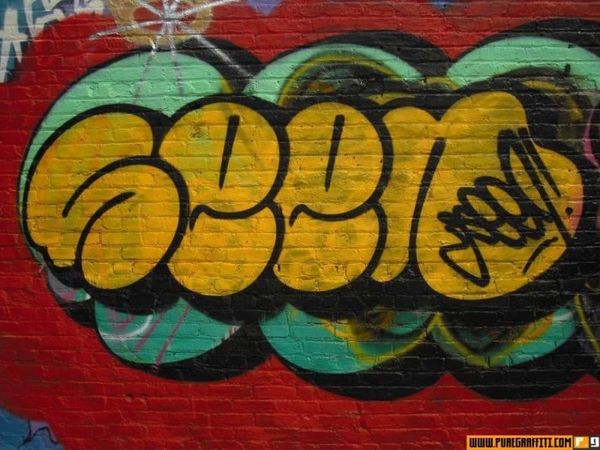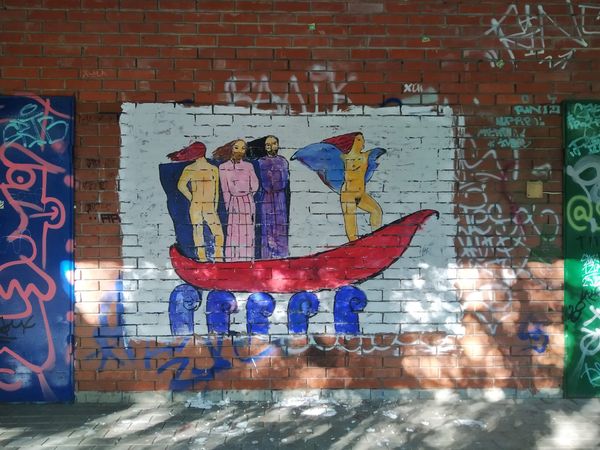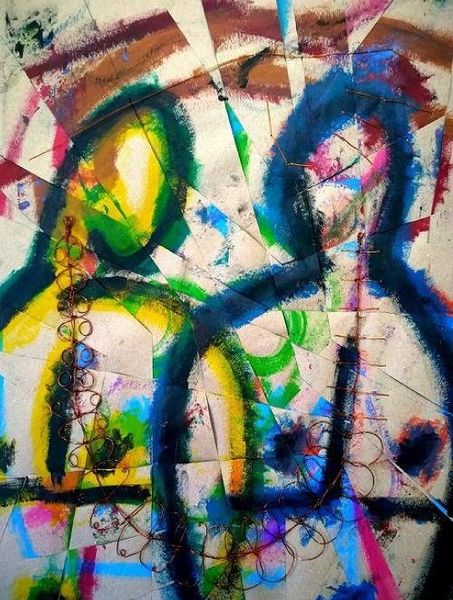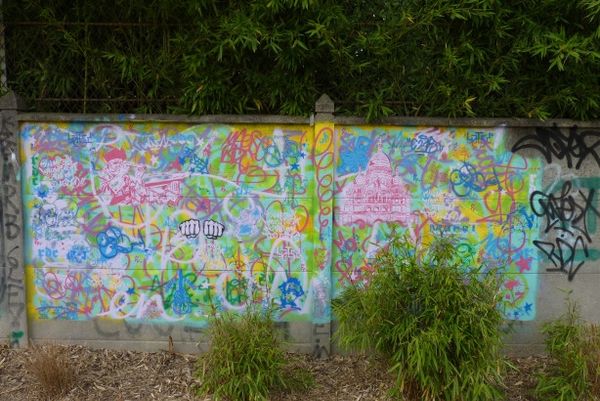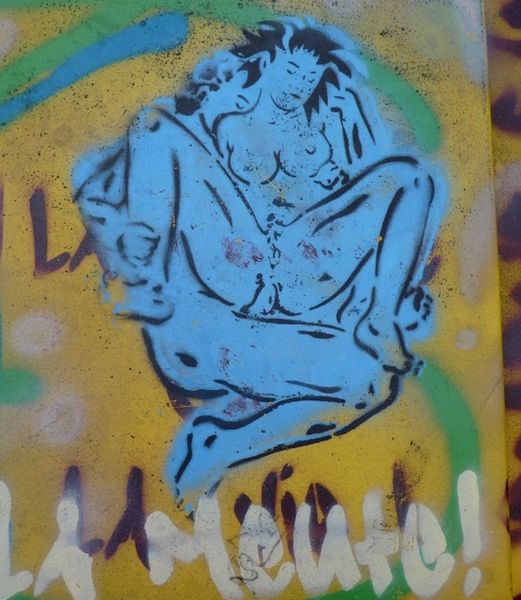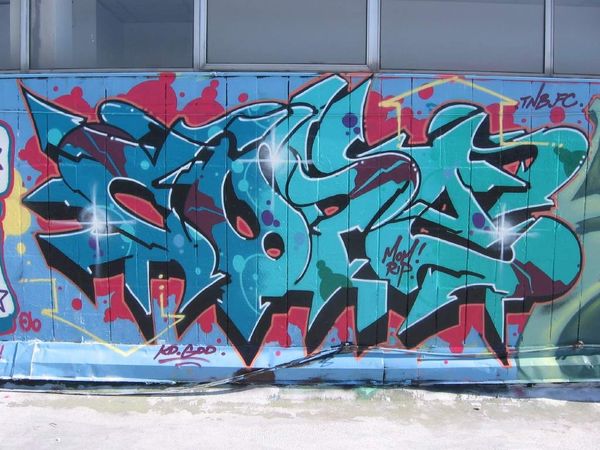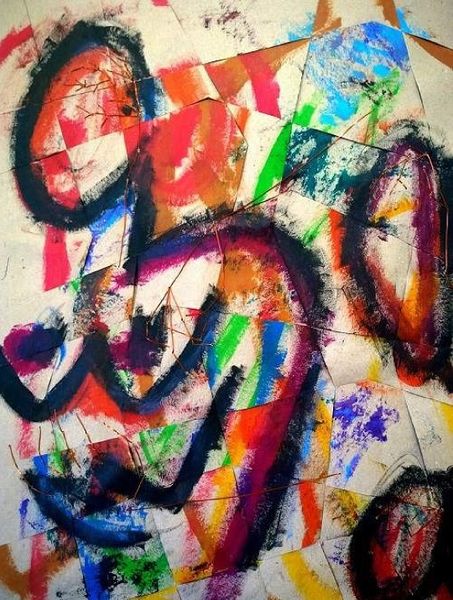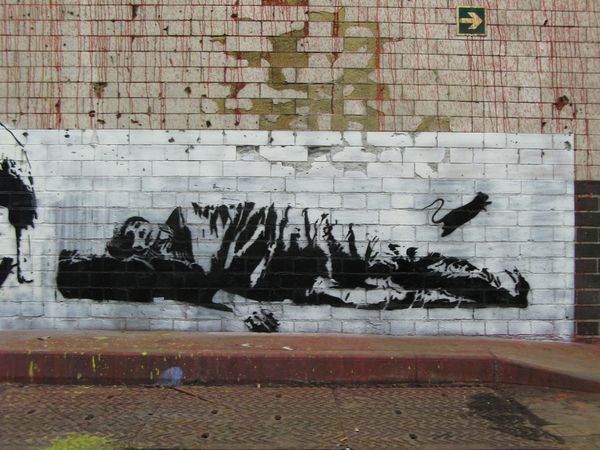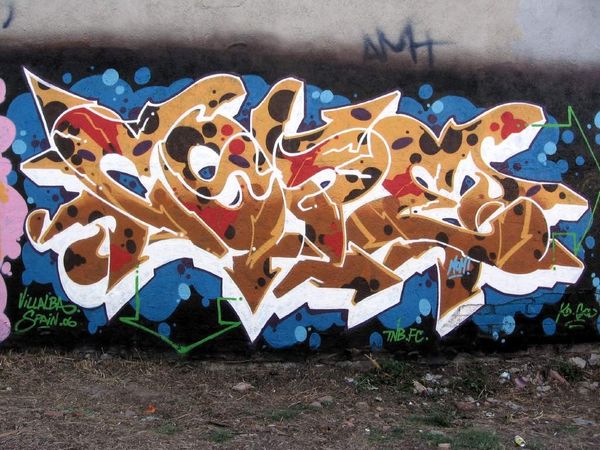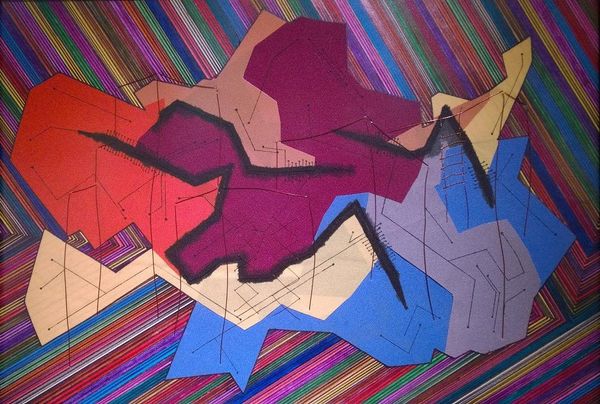
#
graffiti
#
graffiti art
#
street art
#
street shot
#
urban advertising
#
painted
#
text
#
street graffiti
#
spray can art
#
urban art
#
text in urban environment
Copyright: Bahia Shehab,Fair Use
Curator: Sobering, wouldn't you agree? I am looking at a photograph of what appears to be an exterior wall, spray-painted with cats above kneeling figures, by the artist Bahia Shehab; it’s entitled "Rebel cats". Editor: It's intriguing. There's a distinct rawness to it; the wall itself tells a story of wear, and then these brightly colored stenciled cats sit incongruously above, almost mocking, those crouching shapes. Curator: Note how the horizontal disposition of the cats creates a striking pattern. This repetition is reinforced by a stark contrast between their solid blocks of color and the white forms beneath. It gives a formal cadence that's disrupted, significantly, on the right-hand side, doesn't it? The spray application loses integrity there, it dissolves. Editor: Exactly. And this degradation highlights the temporary nature of street art, its inherent connection to the social and political conditions of a place. The layered spray paint shows the act of making art, the artist, materials, the labor behind each one of them. It's all front and center. Curator: The kneeling forms have an unfinished quality; they’re linear, minimal in their delineation. It is precisely in their incompleteness, though, that we are compelled to complete them with our imagination. It echoes the themes of collective protest that the artist works with regularly. Editor: Do we know where this mural was originally located? It seems its meaning relies heavily on its environment. It feels critical of a specific culture of work and the means in which value or status is constructed, perhaps built around a specific exploitation. Curator: The context, of course, would sharpen our understanding of Shehab's deployment of those stencils. There's a disruptive spirit that is visually very dynamic. Editor: This art existing as accessible urban graffiti breaks traditional elitist notions of what belongs inside art institutions versus everyday life. I respect how her visual language disrupts our complacency. Curator: I leave this image thinking about how structure meets social conscience, it is thought-provoking on how to read it from here. Editor: For me, this image challenges the existing conditions around it—from the way it was created, using accessible art materials, all the way to how it exists today.
Comments
No comments
Be the first to comment and join the conversation on the ultimate creative platform.

